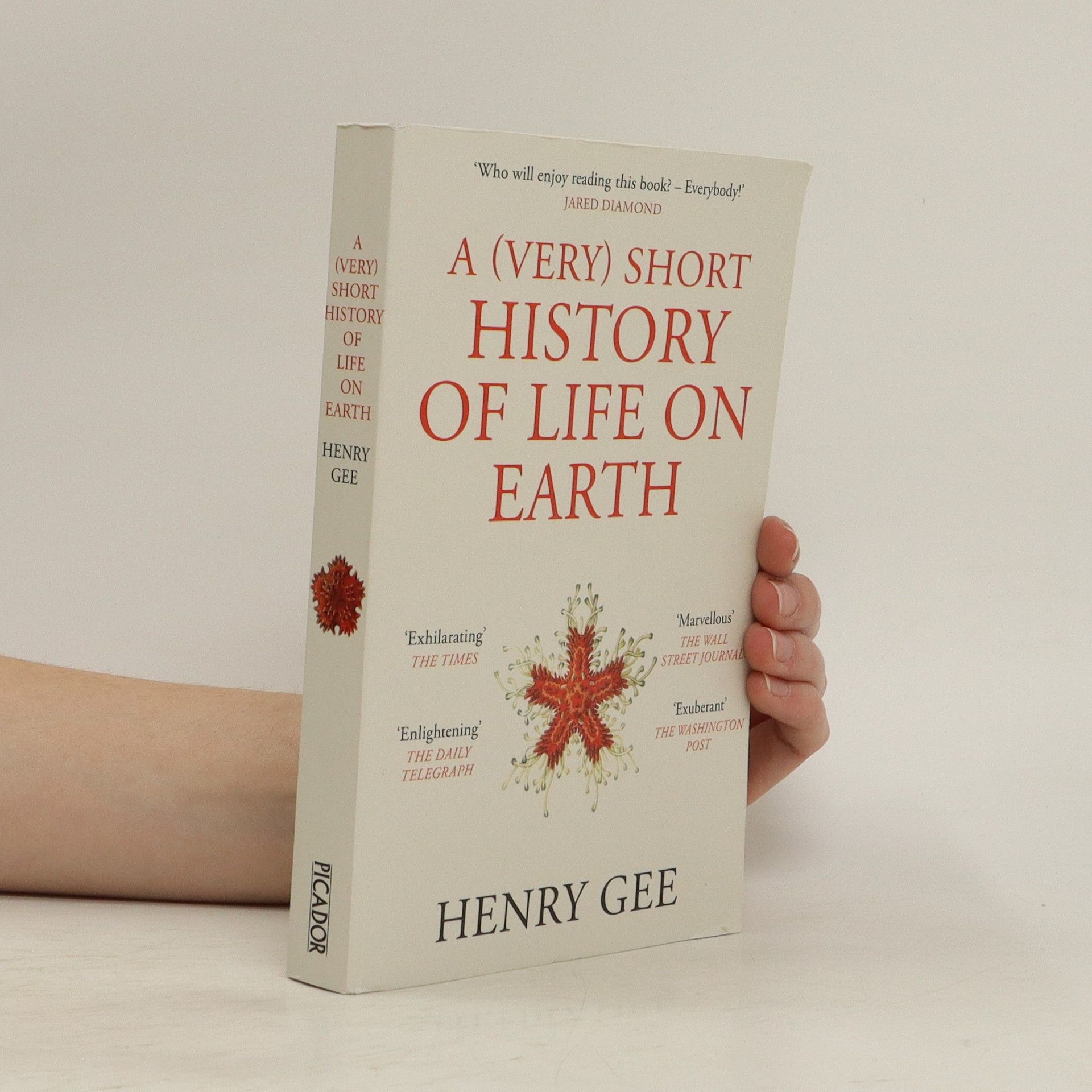For billions of years, Earth was an inhospitable place, marked by churning seas and relentless volcanic activity, with a constantly shifting atmosphere. Despite facing countless challenges, life has repeatedly emerged, evolved, and adapted. It has survived through fire and ice, with simple organisms like slimes evolving into sponges and eventually developing backbones. These early life forms ventured onto land, leading to the rise of hominids and ultimately Homo sapiens. This narrative highlights the remarkable story of survival and persistence, showcasing the delicate balance that sustains life on our planet. Through lyrical prose, the author brings to life the dynamic processes that shaped Earth, from the drifting and colliding of colossal supercontinents to the vibrant ecosystems that emerged. Creatures are vividly personified, from 'gregarious' bacteria in the oceans to the fierce dinosaurs of the Triassic period and the majestic mammals that followed. The text resurrects long-extinct life forms with evocative detail, capturing the evolutionary milestones—from the development of digestive systems to the wonder of flight—inviting readers to experience the intimate journey of life on Earth like never before.
Henry Gee Livres
L'écriture de Henry Gee explore les liens complexes entre la science, l'imagination et l'expérience humaine. Son œuvre mêle souvent de profondes idées scientifiques à des concepts originaux et stimulants. Gee aborde un large éventail de sujets, de l'évolution de la vie à la nature de la conscience. Grâce à son style distinctif et à ses observations pointues, il offre aux lecteurs une nouvelle perspective sur le monde qui les entoure.






The Decline and Fall of the Human Empire
Why Our Species is on the Edge of Extinction
- 320pages
- 12 heures de lecture
Exploring the trajectory of humanity, Dr. Henry Gee examines the rise and impending fall of Homo sapiens. Building on his provocative article in Scientific American, he delves into the factors contributing to our potential extinction, weaving together themes of evolution, societal decline, and environmental challenges. This book offers a comprehensive analysis of the human experience, prompting readers to reflect on our past achievements and the consequences of our actions for the future of our species.
Gee introduces the revolutionary new approach to looking at the history of life - a way of looking beyond the fossil record called cladistics. This throws out old ideas of missing links and descent and instead shows a way back to our ancestors through the almost unimaginable depths of evolutionary time.
Stručná historie života na Zemi. 4,6 miliardy let ve 12 kapitolách
- 272pages
- 10 heures de lecture
4,6 miliardami let ve 12 kapitolách. Prozkoumejte ohromující a dynamický příběh naší planety od renomovaného paleontologa a evolučního biologa Henryho Gee. Kniha představuje jedinečnou cestu skrze neuvěřitelných 4,6 miliard let - od samotného zrození Země až po evoluci člověka, který sije nejen vědom sám sebe, ale i budoucnosti. Geeova díla jsou známá pro jejich schopnost zprostředkovat složité vědecké koncepty s nevídanou srozumitelností a zaujetím pro detail, což čtenářům umožňuje plně pochopit a ocenit hluboké procesy, které formují naši planetu a život na ní. Autor využívá své hluboké znalosti, aby názorně popsal klíčové fyzické a biologické změny, které se odehrály během miliard let. Přechází mezi geologickými érami, evolučními skoky a technologickými inovacemi, které definovaly a nadále definují existenci života na Zemi. Jeho téměř poetické obrazy a způsob vyprávění činí z knihy nejen informační zdroj, ale i poutavé literární dílo. Stručná historie života na zemi byla oceněna prestižní cenou Science Book Prize britskou Královskou společností pro podporu věd v roce 2022, čímž se připojila k dílům vědců, jakými jsou Stephen Hawking nebo Jared Diamond. Publikace je ideální volbou pro každého, kdo hledá hlubší porozumění pro komplexní historii života na naší planetě. Je tak skvělým doplňkem do osobních knihoven i do vzdělávacích institucí.
Tato knížka je určena pro předškolní děti. Obsahuje rozmanité úkoly s malováním a výukou: obrázky od tečky k tečce, bludiště a mnoho dalšího. Za každou úspěšně vyřešenou stránku si dítě může vybarvit čtyřlístek. Knížka je určena pro cílené zdokonalování schopností dětí vpředškolním věku. Je plná veselých obrázků, které odpovídají dětskému chápání. Je prostě ideální pro malé zvídavé špunty!
Die Wissenschaft bei Tolkien
- 289pages
- 11 heures de lecture
Tolkiens Bücher sind mehr als nur irgendwelche Fantasy-Romane; Lesestoff für Kinder und bestenfalls Jugendliche. Tolkiens Bücher sind mehr und jeder, der eines gelesen hat, merkt es, weiß es, kann nur vielleicht nicht sagen warum. Das ist Ihr Buch, wenn Sie mehr über Mittelerde wissen wollen: ob Balrogs fliegen können, weshalb Mithrilrüstungen so hart sind und Legolas auf fünf Meilen Entferung die Zahl der Reiter von Rohan bestimmen kann. Henry Gee nähert sich dem Werk von Tolkien als Naturwissenschaftler und gibt Antworten auf die Fragen, die so viele Fans bewegen.
Porywająca opowieść o przetrwaniu i uporze, dzięki którym życie zagościło na naszej planecie. Przez miliardy lat Ziemia była niegościnnym miejscem, pokrytym wzburzonymi oceanami, powoli kształtującym swój krajobraz poprzez nieustanne erupcje wulkanów. A jednak, mimo wielu niepowodzeń, wyewoluowało tu życie. Życie, które uczyło się i przystosowywało do zmieniających się warunków, by trwać przez następne miliardy lat. Henry Gee w atrakcyjny i przystępny sposób opisuje poszczególne etapy ewolucji życia na naszej planecie. Pokazuje, jak dryfujące superkontynenty zderzały się, kształtując dzisiejsze oblicze Ziemi. Przywołuje dawno wymarłe stworzenia w niezwykle sugestywnych opisach. A każdą formę życia – od maleńkich bakterii przez majestatyczne dinozaury po wspaniałe ssaki – traktuje z należytą powagą i dbałością. Henry Gee sprawia, że zmieniająca się niczym kalejdoskop historia życia staje się zrozumiała i ekscytująca. Lektura tej książki będzie przyjemna dla każdego czytelnika! Jared Diamond
Preskúmajte ohromujúci a dynamický príbeh našej planéty od renomovaného paleontológa a evolučného biológa Henryho Geeho. Kniha predstavuje jedinečnú cestu neuveriteľnými 4,6 miliardami rokov - od samotného zrodu Zeme až po evolúciu človeka, ktorý si nielen uvedomuje sám seba, ale aj svoju budúcnosť. Geeho diela sú známe svojou schopnosťou podať zložité vedecké koncepty s nevídanou jasnosťou a pozornosťou k detailom, čo umožňuje čitateľom plne pochopiť a oceniť hlboké procesy, ktoré formujú našu planétu a život na nej. Autor využíva svoje hlboké vedomosti na to, aby živo opísal kľúčové fyzikálne a biologické zmeny, ktoré sa odohrali v priebehu miliárd rokov. Pohybuje sa medzi geologickými epochami, evolučnými skokmi a technologickými inováciami, ktoré určovali a naďalej určujú existenciu života na Zemi. Jeho poetické obrazy a rozprávačský štýl robia z knihy nielen zdroj informácií, ale aj pútavé literárne dielo. Kniha Stručná história života na Zemi získala v roku 2022 prestížnu cenu za vedeckú knihu, ktorú udeľuje britská Kráľovská spoločnosť pre podporu vedy, a zaradila sa tak k dielam vedcov, ako sú Stephen Hawking a Jared Diamond. Kniha je ideálnou voľbou pre každého, kto sa snaží hlbšie pochopiť zložitú históriu života na našej planéte. Vďaka tomu je skvelým doplnkom osobných knižníc a vzdelávacích inštitúcií.
